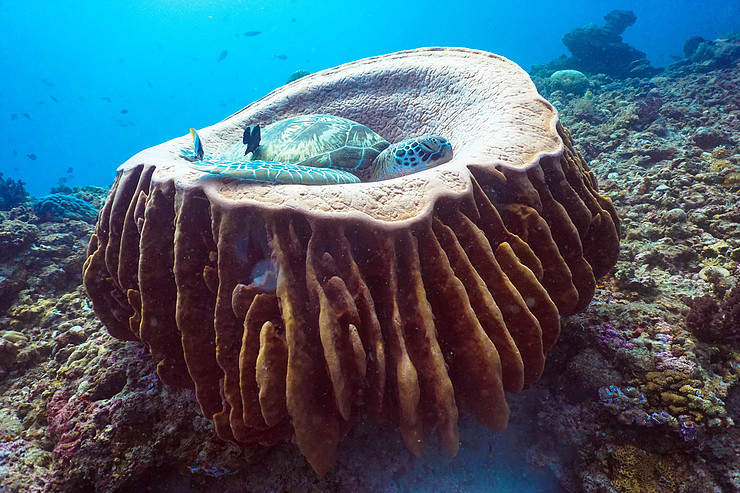The 5 Don'ts of Sea Turtles
Madeline St Clair Baker
Whether its flying gracefully through the water or lumbering awkwardly down that sandy beach, it could be argued that turtles are the cutest reptiles going. Sadly, in recent years SIX of the SEVEN sea turtle species have been listed as threatened or endangered as a result of human influences. Whilst you may not be able to directly tackle any of the bigger threats to sea turtles, if you’re visiting a turtle hotspot, be respectful and stick to these five big no-no’s when it comes to turtle tourism…
1. Don’t Touch Turtles
If I had a dollar for every time I’ve heard people ask if they can ‘touch’ or ‘ride’ the turtles, then I would be a very rich girl (and hey, maybe I’d actually have enough to pay the $25,000 Hawaiian fine for touching sea turtles). Not only does touching turtles cause them stress, but the bacteria on your hands can actually be harmful to turtles. Not to mention, it’s illegal to touch or harass a sea turtle in a lot of places!
Photo: Madeleine St Claire Baker @mads_ocean
2. Don’t Chase Turtles
Lesser known fact – sea turtles actually need to breathe air. So when I say give that turtle some breathing room I mean it quite literally. Sea turtles are adapted to life underwater in that they can hold their breath for several hours and even sleep underwater, but eventually they must return to the surface to breathe. When hounded by a pack of snorkelers looking for a well-meaning photo, a surfacing turtle can become distressed. If a turtle becomes stuck underwater, it can drown. So be respectful and let the turtle decide if it wants to swim by you!
3. Don’t Disturb Nesting
Female turtles make their way up the beach, dig a nest, drop around 100 eggs and then return to the sea. If you are fortunate enough to witness a female turtle nesting on a beach, or you spot the tell-tale signs of a turtle nest, give the area plenty of space. Any distractions may disorient or frighten the turtle, and the use of torches, camera flashes or other artificial lighting can cause major disruptions in their natural behaviour. Trust me, a cool selfie will never be worth that mumma turtle returning to the sea without laying her eggs.
Photo: Madeleine St Claire Baker @mads_ocean
4. Don’t Harass Hatchlings
Baby sea turtles are adorable, especially as they race down the beach together one flipper at a time. But don’t be tempted to pick-up the hatchlings, or “rescue” that one that looks like its struggling at the rear of the pack. Baby sea turtles “imprint on” or remember the beach on which they hatched, meaning that as adults they will return to the very same beach to lay their own eggs. If newly-hatched turtles are stressed or removed from the beach, their chances of surviving can be reduced, as well as affecting their ability to imprint. If you think that a sea turtle nest needs help, call an expert who will be able to assist the hatching without harming the turtles.
5. Don’t Litter
There is already a huge amount of trash in our oceans and each year over 100 million marine animals die from the ingestion or entanglement of marine debris. Sea turtles are particularly susceptible to the effects of consuming marine debris – jellyfish and a plastic bag tend to look the same to a hungry turtle – which can result in the blockage of digestive tracts, leading to starvation and death. So next time you’re at the beach, make sure to take your trash with you and leave only footprints!
Photo: Harriet Tyley @harriettyley



